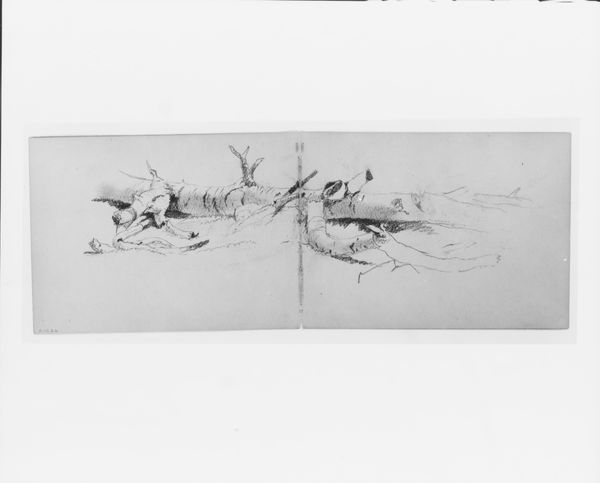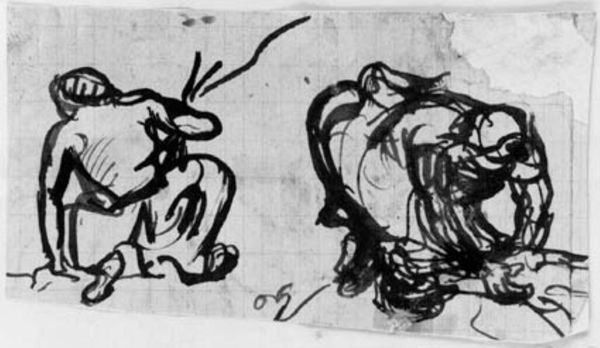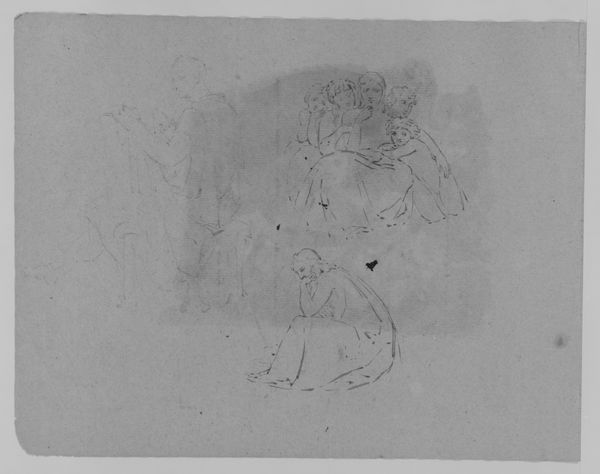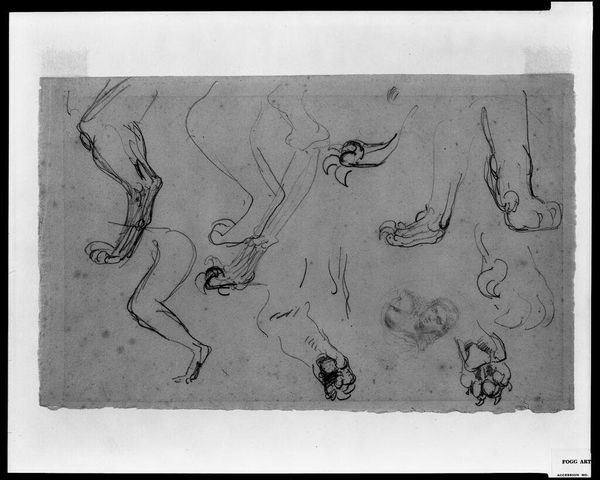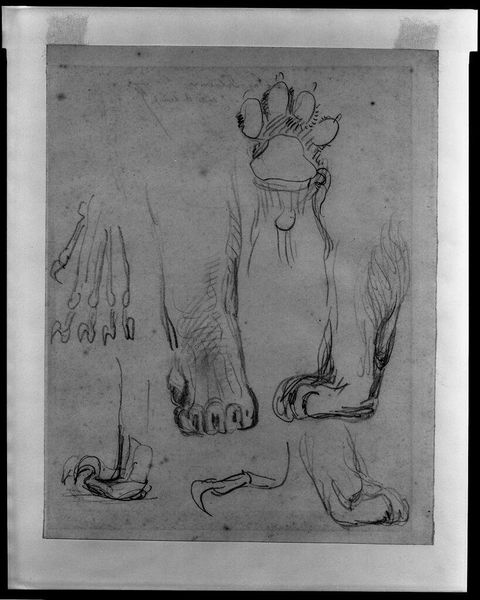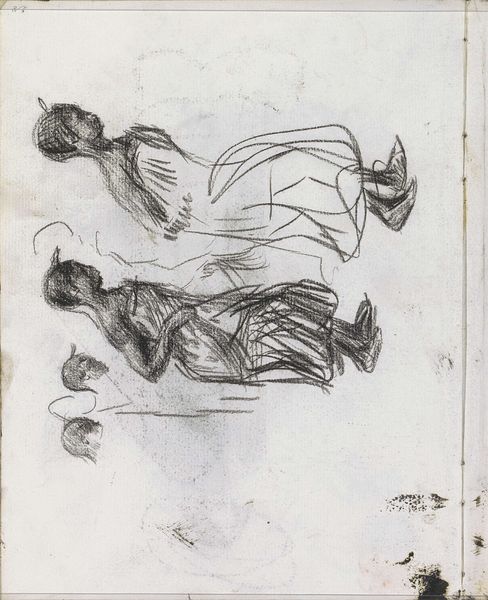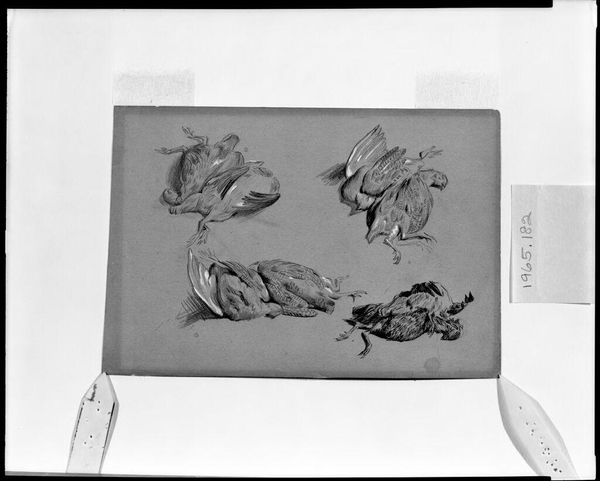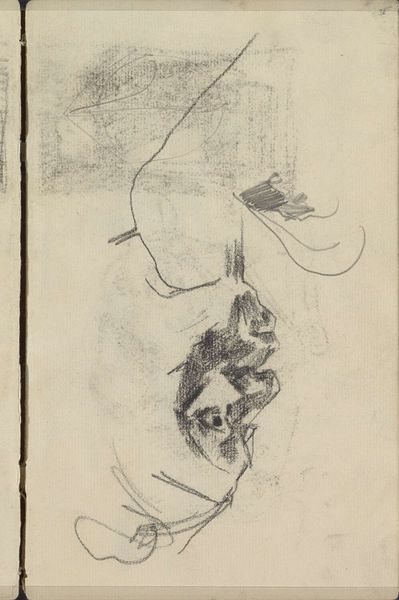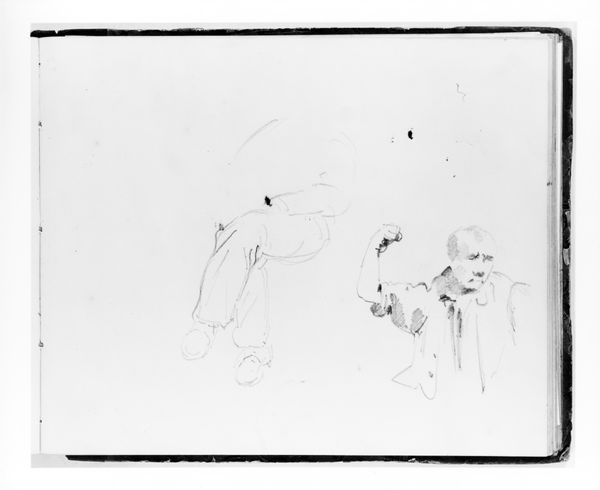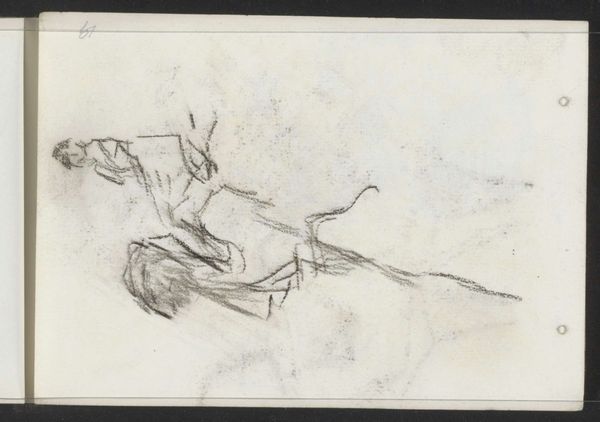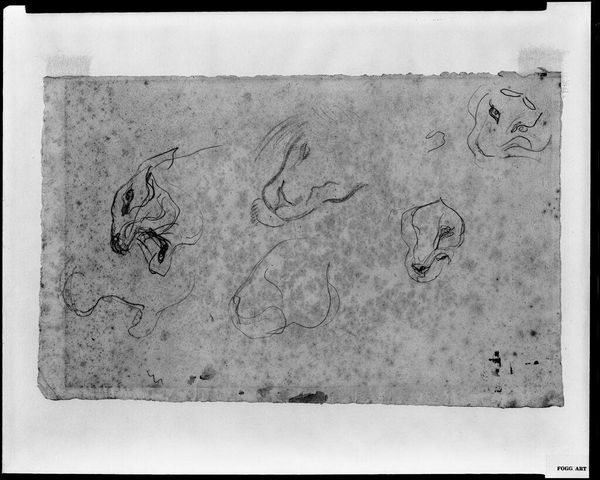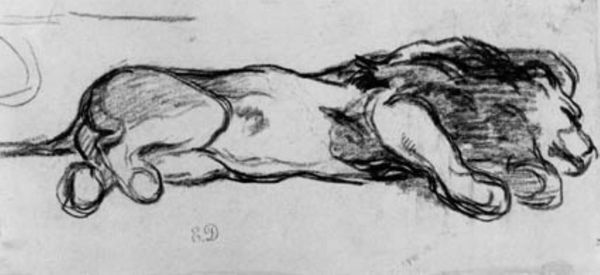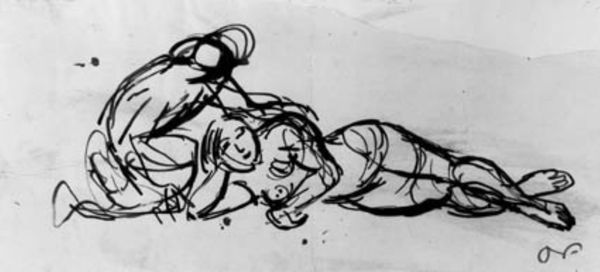
Study of Seated Male Figures for Sculpture Base (from Sketchbook) 1857 - 1860
0:00
0:00
drawing, paper, ink, pencil
#
portrait
#
drawing
#
negative space
#
figuration
#
paper
#
ink
#
sketch
#
pen-ink sketch
#
pencil
#
academic-art
Dimensions: 10 7/8 × 5 5/8 in. (27.6 × 14.3 cm)
Copyright: Public Domain
Curator: Here we have John Quincy Adams Ward’s "Study of Seated Male Figures for Sculpture Base (from Sketchbook)," dating from 1857 to 1860. It's an ink and pencil sketch on paper, currently held in the Metropolitan Museum of Art. Editor: Wow, I feel a sense of intense, contained power from this sketch! There’s a definite sense of strain in those figures. Is it meant to depict a sculptural Atlas? Curator: Precisely. Ward was clearly exploring classical themes and forms, common during the mid-19th century's interest in civic art and sculpture that elevated public spaces. These studies, with their strong, classical poses, were preliminary explorations for supporting elements, or bases, for his larger sculptural works. He would consider how such figures engaged symbolically and physically with their surroundings, imbuing his public works with narratives that tied back to traditions of strength and democratic virtue. Editor: And they feel so… burdened, like they’re carrying the weight of something enormous, unseen in this drawing. It almost creates a discomfort in me – this feeling of immense weight, the vulnerability of muscle under strain, and then that looming blank circle above them, the emptiness accentuates their heavy burden. What could that have been? Curator: Knowing Ward’s interest in idealised form, he sought to convey that physical labor, through which both empires and democratic projects were enabled. We also know Ward often integrated social and political ideals, so he likely aimed to create a relatable image for the everyday citizens in public spaces by grounding it with this ideal and that reference to physical power and labor. Editor: You're right – looking again, I feel a real respect, rather than mere pity, now for the figures’ burden, they exude classical ideals for all seasons, then! It's a powerful re-envisioning of classical form through a modern democratic lens. I can sense that artist finding his vision. Curator: Exactly, the sketch allows us to explore Ward's thought process in that crucial era of artmaking: thinking about how the social weight that artworks themselves carried reflected on his subjects. Editor: So in essence the sketch has a double layered feeling of being upheld—it supports physical sculptures in a public space, but also democratic aspirations. Profound! Curator: A profound assessment!
Comments
No comments
Be the first to comment and join the conversation on the ultimate creative platform.
